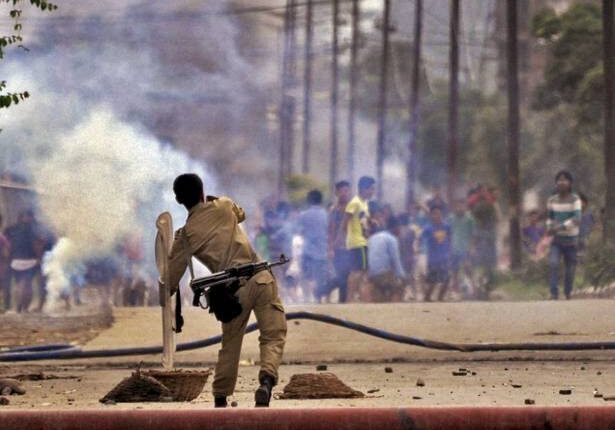
Wielding a pen amidst placards and pellet guns
This story first appeared in The Hindu
SAWM member and journalist Suhasini Haidar pens down her own experiences of covering mass protests to elaborate on the points of what journalists should and should not do while doing their jobs of covering such situations.
When tear gas first hits you, it is hard to follow the standard operating procedure journalists are given when they go out to cover protests. I was 22, in Srinagar, when I first smelt that now-familiar burning scent of chilli (capsica) mixed with CR/CS/CN chemical gas, which the police dilute according to the strength of the protest. “Don’t rub your eyes”, “cover your nose and mouth with a wet cloth”, “run far from the firing” and “always carry a bottle of water” are all great bits of advice, but not easy to do if you are a journalist carrying tripods and other equipment and trying to get photographs, record visuals, and note down comments of protesters and the police all at once. I was caught off guard the first time, but I learnt quickly to avoid the stinging sensation, streaming eyes, breathlessness and the headache after.
One trick is to stay on the sidelines of a protest, not at its centre. Journalists often interview protesters right in the middle of the marching crowds, but that isn’t the best idea. Others try to get as close to police barricades, even stand on top of them to get a better shot, which can be dangerous if protesters decide to knock them down or the police decide to lathi-charge the protesters. In fact, conflict trainers will tell you that the best place to be is at a slight height away from the protest — you can get a view, but not become part of the melee. Also, journalists must take pains not to be identified with either the security forces or the protesters. One way to do that is to not wear khaki or green or camouflage clothes, preferably nothing that resembles a uniform, and avoid t-shirts with political messages. Also, journalists should always have their press IDs displayed prominently.
There’s more in journalism manuals about what to do when protests get out
of hand or the police decide to get tough. The first sign of that is when police cordons get tight or the street lights go out. Another confusing sign is when authorities start clearing barricades, which could mean they are bringing in fire trucks to use water cannons on the crowds, or buses to arrest them en masse. Either way, this is another clear cue for journalists to step to the side of the protests and get to a vantage point. This is also a good time to change the tape or memory card in your camera, especially as the police often detain journalists and confiscate videos that may show excessive force or a human rights violation by forces. It also makes good sense to steer clear of those in the protest who might purposely push journalists in harm’s way to ensure favourable coverage.
Much of what journalists learn about covering protests is on the job. In the 1990s, I covered a protest on Delhi’s Parliament Street where a photographer was grievously injured because he tried to climb a fire truck for a good view and it suddenly backed away. During the 2010 student protests in Kashmir, when pellet guns were widely used by the forces, I learned to keep away from police lines, to avoid the sharp stones pelted at them. During the Nirbhaya protests in Delhi, I learned that wearing several layers of clothes helps to avoid “water burns” from the sheer force of water cannons. During the protests against President Mohamed Morsi in 2013 in Egypt, I learned how quickly a protesting crowd can morph into one for regime change, and the story one is covering itself changes.
